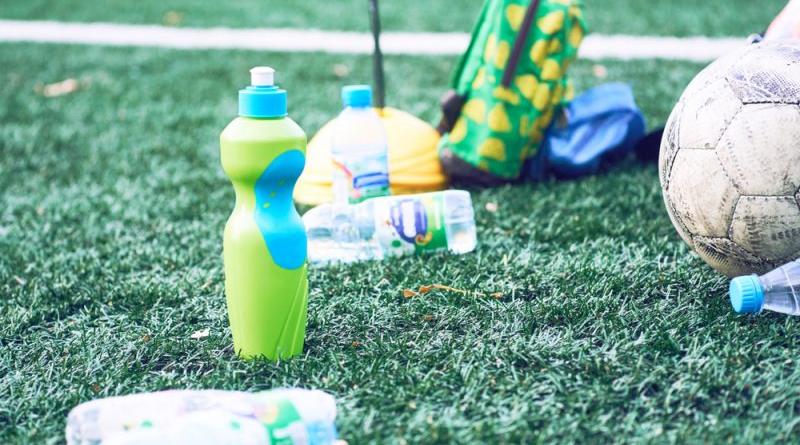How sustainable can football be?

Football inspires, it brings people together and is like a religion to some – as we may well see at the Women’s World Cup final in France on Sunday. But football also has its downsides: heaps of rubbish, squandering of water and a big CO2 footprint. The Life Tackle initiative now wants to change that.
For anyone attending a football match, the success of their team is what weighs on their mind. The disposable plastic cup for the chilled half-time beer, the water usage of the sprinklers or the question of how thousands of football fans travel to the stadiums all across Europe every weekend don’t seem to bother many fans.
Life Tackle wants to raise awareness of sustainability among both fans and match organisers. The project was founded by the Institute for Management of the Scuola Superiore Sant’Anna in Pisa, Italy, together with seven other European partner organisations.
UEFA, the Union of European Football Association, and national football associations in Italy, Romania and Sweden also support the project, which is co-financed by the LIFE programme of the European Commission.
Life Tackle is set to find out how football matches can be organised and played as sustainably as possible. In order to do so, all aspects of a match are examined: from the size and condition of the pitch to the half-time snacks.
At the end of the project, which runs until 2021, a catalogue of guidelines and ideas will be compiled. This will be made available to football clubs and sports organisers throughout Europe and will serve as a guide for a more sustainable football experience.
Until then, participants in the project will visit different sports venues in Europe to find out how sustainable matches have been organised so far and where things could be better. The figures so far suggest that there is still room for improvement in many places.
Polluter Football
According to Life Tackle, an average football fan generates 0.8 kilograms of rubbish per visit to a stadium. That doesn’t sound like much at first. Extrapolated to all fans attending matches across Europe, Life Tackle estimates that this amounts to 750,000 tonnes of waste per year. This is more garbage than Liechtenstein produces annually.
The CO2 balance of football matches and tournaments has also recently become an issue.
At the Europa League finals which took place at the end of May in Baku, the capital of Azerbaijan, both contenders were from London: Arsenal and Chelsea. With them, 12,000 football fans travelled from the British capital London to the venue. The CO2 consumption: 5,595 tons. For comparison, a single person produces on average about ten tons of CO2 per year.
A few days later, again two English clubs, Tottenham and Liverpool, faced off in the Champions League Final in Madrid. This time more than 30,000 fans travelled with their teams. The CO2 emissions for both matches are estimated at around 35,450 tonnes.
The environmental impact of travelling to the stadiums will also be an issue during the upcoming UEFA European Championship in 2020. Twelve cities in eleven different countries will host the tournament. Players and fans will have to travel back and forth between the venues and UEFA has already announced that it will compensate for the resulting pollution.
More awareness, less pollution
Life Tackle takes the quantities of waste and pollutants as a starting point to raise awareness of the environmental impact sporting events can have.
Other initiatives in the past, have already shown that messages can be spread through football, like the campaign against discrimination. This is also due to the fact that football reaches the masses. Some 3.5 billion people watched the 2018 World Cup. Around 40% of the population describe themselves as interested in football.
One European club has already announced that it wants to be as green as its football shirts: Real Betis from Seville.
At its stadium, the floodlights will be equipped with LED lamps and waste collection will be improved. The construction of a new training area is planned to be climate-neutral. If Life Tackle becomes a success, more clubs and organisers may follow the club’s example in the coming years.
5 July 2019
![]()




